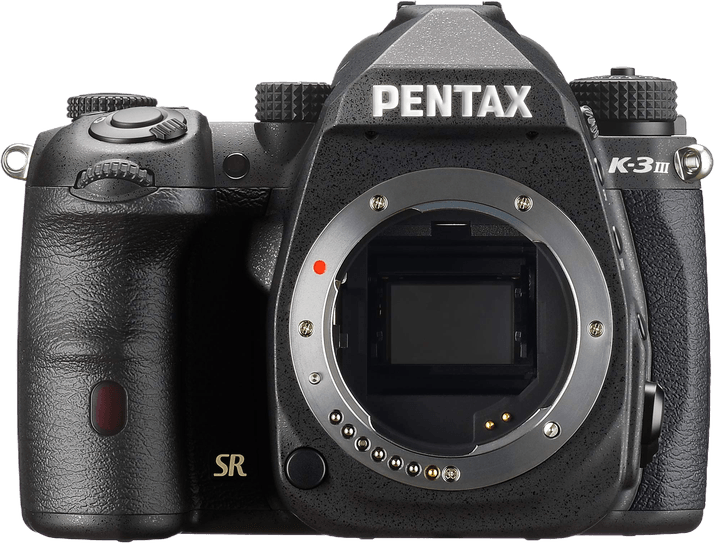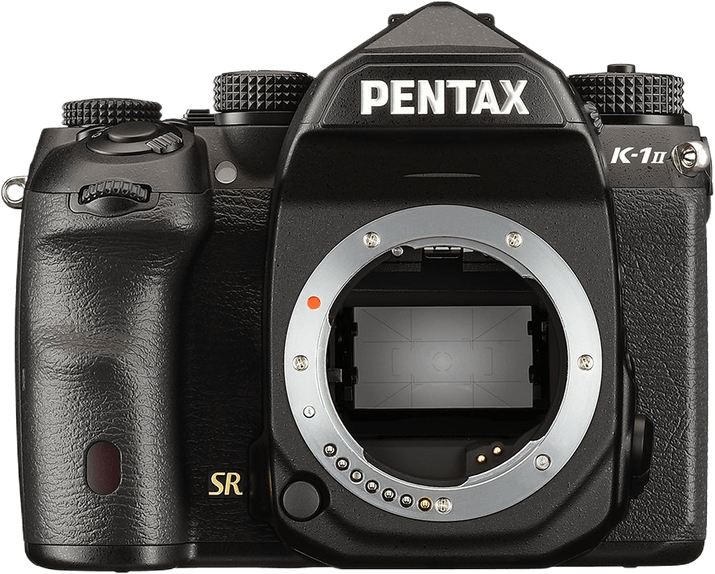Pentax K-3 Mark III vs K-1 Mark II Comparison
Pentax K-3 Mark III

Pentax K-1 Mark II

The Pentax K-3 Mark III outperforms the Pentax K-1 Mark II with a score of 83/100 compared to 80/100. Both cameras are DSLRs and were launched at the same price of $1,999. They share similarities in their announcement dates, with the K-3 Mark III being released in 2021 and the K-1 Mark II in 2018.
The K-3 Mark III has the advantage of being smaller and lighter, measuring 135 x 104 x 74mm and weighing 820g, making it more portable than the K-1 Mark II, which measures 137 x 110 x 86mm and weighs 1010g. This difference in size and weight can be crucial for photographers who value mobility and ease of handling.
On the other hand, the K-1 Mark II might still appeal to some users due to its slightly lower score, which does not necessarily imply a significant difference in performance. Both cameras share a range of features and capabilities, and the choice between them might come down to individual preferences and specific needs.
Taking these factors into account, the K-3 Mark III stands out as the better camera, primarily due to its smaller size and lighter weight. However, the K-1 Mark II remains a viable option for those who don’t prioritize portability as much.
Pentax K-3 Mark III vs K-1 Mark II Overview and Optics
The Pentax K-1 Mark II comes out on top in the optics comparison with a score of 85/100, a 3-point lead over the Pentax K-3 Mark III’s score of 82/100. Both cameras share some common specifications, such as the CMOS sensor type, Prime IV processor, DXOMARK sensor score of 96, and image stabilization. Additionally, both cameras use the Pentax K lens mount system, with the K-3 Mark III using the KAF2 mount and the K-1 Mark II using the KAF4 mount.
The K-1 Mark II’s advantage lies in its higher megapixel count of 36 compared to the K-3 Mark III’s 26 megapixels. This results in higher resolution images, providing more detail and better image quality. Furthermore, the K-1 Mark II has a full-frame sensor, which offers better low-light performance and a wider dynamic range than the K-3 Mark III’s APS-C sensor.
On the other hand, the K-3 Mark III has a faster shooting speed of 12 frames per second, compared to the K-1 Mark II’s 4.4 frames per second. This makes the K-3 Mark III more suitable for capturing fast-moving subjects and action photography.
Considering these points, the Pentax K-1 Mark II is the better choice for photographers who prioritize image quality, resolution, and low-light capabilities. Meanwhile, the Pentax K-3 Mark III is a more suitable option for those who require a faster shooting speed for action photography. Both cameras offer excellent optics, but the K-1 Mark II’s higher score reflects its superiority in key areas that contribute to overall image quality.
Pentax K-3 Mark III vs K-1 Mark II Video Performance
The Pentax K-3 Mark III outperforms the Pentax K-1 Mark II in video capabilities, with a score of 83 out of 100 compared to the K-1 Mark II’s score of 70. Both cameras share some common specifications, including a maximum video frame rate of 60fps and built-in time-lapse functionality.
The K-3 Mark III excels with its maximum video resolution of 4K and dimensions of 3840 x 2160, providing a significant advantage in terms of image quality and detail. This higher resolution allows users to capture more vibrant and detailed videos, making the K-3 Mark III an ideal choice for those who prioritize video performance in their camera selection.
On the other hand, the K-1 Mark II has a maximum video resolution of Full HD and dimensions of 1920 x 1080. While this is still suitable for many users, it falls short when compared to the K-3 Mark III’s superior 4K capabilities. However, the K-1 Mark II may still be a viable option for those who do not require 4K video resolution and prefer to focus on other aspects of the camera.
In comparing the video capabilities of the Pentax K-3 Mark III and the Pentax K-1 Mark II, it is evident that the K-3 Mark III is the superior choice for those seeking high-quality video performance. The K-1 Mark II, while still a capable camera, is better suited for users who do not prioritize 4K video resolution in their decision-making process.
Pentax K-3 Mark III vs K-1 Mark II Features and Benefits
The Pentax K-3 Mark III outperforms the Pentax K-1 Mark II in features, scoring 87/100 compared to the K-1 Mark II’s 72/100. Both cameras share similarities in specifications, such as a 3.2-inch screen, WiFi, and Bluetooth connectivity. However, the K-3 Mark III surpasses the K-1 Mark II in certain aspects.
The K-3 Mark III has a higher screen resolution of 1,620,000 dots, providing a clearer and sharper display compared to the K-1 Mark II’s 1,037,000 dots. Additionally, the K-3 Mark III has a touchscreen, making it more user-friendly and convenient for navigating settings and reviewing images.
On the other hand, the K-1 Mark II has a flip screen, allowing for more versatile shooting angles and improved ease of use in certain situations. It also features GPS, which the K-3 Mark III lacks. This enables photographers to geotag their images, providing valuable information for travel and landscape photography.
Despite its lower feature score, the K-1 Mark II offers advantages in specific areas, such as the flip screen and GPS. However, the K-3 Mark III’s higher resolution touchscreen and overall higher feature score make it a more capable camera in general. Choosing between these two cameras depends on the individual photographer’s needs and preferences. If a flip screen and GPS are essential, the K-1 Mark II may be the better choice. However, for those prioritizing screen resolution and a touchscreen interface, the K-3 Mark III is the clear winner.
Pentax K-3 Mark III vs K-1 Mark II Storage and Battery
The Pentax K-3 Mark III outperforms the Pentax K-1 Mark II in storage and battery, scoring 81/100 compared to the K-1 Mark II’s 65/100. Both cameras share common specifications, such as two memory card slots and compatibility with SD, SDHC, and SDXC cards. They also use the same battery type, D-LI90.
The K-3 Mark III excels with its UHS-II compatibility in one slot, allowing for faster data transfer. It also boasts a longer battery life of 800 shots, compared to the K-1 Mark II’s 670 shots. Furthermore, the K-3 Mark III supports USB charging, adding convenience for users on the go.
On the other hand, the K-1 Mark II only supports UHS-I compatibility, resulting in slower data transfer. Although it has a shorter battery life, 670 shots are still adequate for most photography sessions. However, the lack of USB charging may be a drawback for some users.
In comparing storage and battery, the Pentax K-3 Mark III proves to be a superior choice with its faster data transfer, longer battery life, and USB charging capabilities. While the Pentax K-1 Mark II remains a decent option, the K-3 Mark III’s advantages make it a more appealing camera for those prioritizing storage and battery performance.
Alternatives to the Pentax K-3 Mark III and K-1 Mark II
Are you still undecided about which camera is right for you? Have a look at these popular comparisons that feature the Pentax K-3 Mark III or the Pentax K-1 Mark II:

